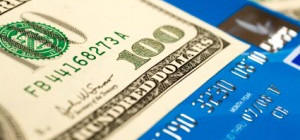Credit card debt is something we all know about and hope it never happens to us, but the reality is that it’s affecting an increasing number of Australians.

Initially, cardholders get a monthly statement with a minimum payment due and pay what is a reasonable amount, and it all seems to run smoothly.
Little thought may be given to the full amount due, other than a belief that it will be paid off at some time in the future.
For many people, the spending cycle continues and before they know it their debts are mounting. The situation becomes exacerbated when multiple credit cards are involved.
Unfortunately, this type of debt is all too commonplace, with Australians currently owing more than $32 billion on credit cards. The average cardholder has $4,200 of credit card debt and is paying around $700 in interest per year (if their interest rate is between 15 and 20%).
The good news though is that with a few smart strategies it’s possible to eliminate your credit card debt once and for all. Here are some of the most popular tips from industry experts, including Money Smart and Canstar.
Target one card first
If you have multiple credit cards it could be best to target one card at a time, starting with the one that has the highest interest rate. When that card is paid off you can then move onto the one with the next highest rate.
Another strategy is to pay off the card with the smallest debt first as the minimum payments will be more manageable.
Either of these targeted approaches will give you a sense of making meaningful progress, ensuring you have a better chance of achieving your overall goal.
It can also be a good idea to close each credit card account as you pay it off.
Avoid accruing extra debt
It’s important to be particularly vigilant about not accruing extra debt while trying to pay off your credit cards.
You might want to try and avoid unnecessary purchases where possible. It can help to stop using all but one of your cards, so you can better track any new expenses and debt.
Similarly, you could lower the limit on all of the cards you use so you’re not tempted to overspend.
Speak to your credit provider
If you’re finding it particularly difficult to pay back your debts or you’re experiencing exceedingly high-interest rates you might consider contacting your credit card provider.
A simple conversation with your credit card provider may result in a lower interest rate that could save you hundreds of dollars in the long-run.
Depending on the provider and your customer history you may also be able to negotiate a workable repayment plan.
Consider transferring your balance
One strategy, which should be approached with caution, is transferring the balance from one card to another card with a lower interest rate.
This works best when you’re able to pay back the debt within an interest-free period.
However, you should read the terms and conditions carefully to find out what the rate will convert to if you fail to pay off the balance within that time frame.
Increase your minimum amount payments
Paying only the minimum amount due can mean it could take years to clear your credit card debt.
Money Smartgives the following example: if you have $4,400 of credit card debt, it will take you on average 31 years to repay it making minimum repayments only. During this period, you would pay almost $15,000 in interest.
In comparison, if you paid $216 each month, the debt would be paid in two years, saving more than $9,000 in interest.
Even just paying an extra $50 per month can make a significant difference.
Consolidate your debt
Transferring all of your card balances to a personal loan can consolidate your debt and provide structure for how and when it has to be repaid.
Drawing on other funds
Some people may be fortunate enough to have savings they could access to pay off their credit card debt.
This can make sense if you’re not likely to miss the funds. However the Association of Superannuation Funds of Australia warns that drawing on other funding sources such as superannuation to pay back debts isn’t always a good idea.
Get expert advice
If you’ve considered the above strategies and are still feeling overwhelmed by credit card debt you may like to seek expert advice.
You can get help from a financial counsellor via Money Smart or talk to superannuation experts that offer financial advice to help members secure their financial future.
All of these strategies can make a big difference and help you get rid of credit card debt!
This article has been prepared by a third party, on behalf of NSF Nominees Pty Limited (ABN 29 053 228 667 AFSL 253129), trustee of Nationwide Superannuation Fund (Nationwide Super) (ABN 15 201 768 813), for information purposes only. It does not take into account your objectives, financial situation or needs. You should consider whether it is appropriate to your individual circumstances.
As at the time of compilation, the information in this article is correct, and any estimates, opinions, conclusions or recommendations are reasonably held or made.
The information contained in this article should not be used or relied upon as a substitute for professional advice. To the maximum extent permitted by law, NSF Nominees Pty Limited and third parties disclaim all liability and responsibility for any direct or indirect loss or damage which may be suffered by any recipient through relying on anything contained in or omitted from this article.







